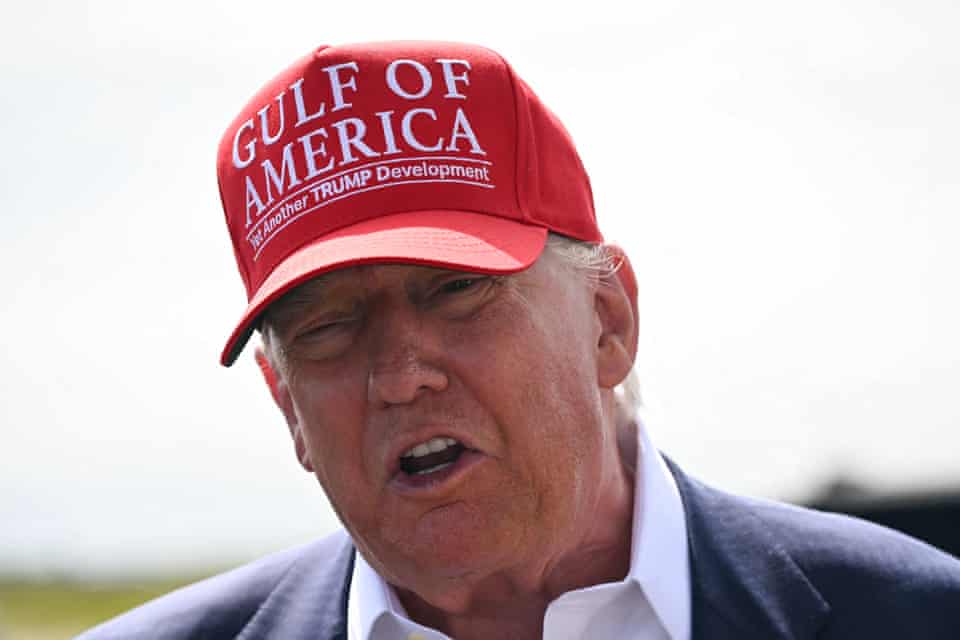President Donald Trump has announced that all goods imported into the United States from both the European Union and Mexico will face a 30% tariff rate starting 1 August, a move that has sent shockwaves through global trade circles and raised fears of a transatlantic trade war.
The US president, who is seeking a second term, made the declaration via letters posted to his social media platform, Truth Social, on Saturday. The tariff hike comes despite months of negotiations between the EU and US trade officials, including US Trade Representative Jamieson Greer, aimed at avoiding exactly such an outcome.
Trump’s decision blindsided European capitals. A deal in principle had been reached just days earlier involving a 10% tariff, already five times the pre-Trump rate, which the EU described as painful but tolerable. The abrupt escalation to 30% has derailed those efforts and placed EU trade ministers under immense pressure ahead of a pre-arranged summit on Monday.
Some member states are now pushing for the immediate activation of €21 billion (£17.6 billion) in retaliatory measures that had been suspended pending the outcome of talks.
In his letter to the EU, Trump accused the bloc of fostering “large, and persistent, Trade Deficits” through “Tariff, and Non-Tariff, Policies, and Trade Barriers”. He added: “Our relationship has been, unfortunately, far from Reciprocal.”
Mexico, too, was not spared. While Trump acknowledged the country’s efforts to reduce undocumented migration and fentanyl trafficking into the US, he accused it of failing to prevent North America from becoming a “Narco-Trafficking Playground”.
European Commission President Ursula von der Leyen condemned the new tariffs, warning they would “disrupt transatlantic supply chains, to the detriment of businesses, consumers and patients on both sides of the Atlantic”. She reiterated the bloc’s openness to continue negotiations but confirmed that “proportionate countermeasures” would be adopted if necessary.
Italian Prime Minister Giorgia Meloni called for “goodwill” to reach a fair deal, cautioning against “polarisation” and a trade war that could fracture Western unity. “It would make no sense to trigger a trade war between the two sides of the Atlantic,” she said.
The sudden tariff hike has raised further doubts about Trump’s negotiating tactics and reliability. While he had earlier granted an extension for talks until 1 August, the European Commission was informed of the 30% rate just ahead of Saturday’s public announcement, with no prior bilateral agreement.
Brussels is likely to interpret the move as a pressure tactic aimed at extracting greater concessions. Trump has previously described the EU as “nastier” than China on trade matters.
Trump also plans to target other major economies, including Japan, South Korea and Brazil. Brazil’s President Luiz Inácio Lula da Silva downplayed the announcement, saying his government is open to negotiations but criticised Trump’s method of communication. “Trump could’ve called, but instead posted the tariff news on his website, a complete lack of respect, which is typical of his behaviour towards everyone,” Lula said.
Even if Trump had agreed to the 10% tariff proposal earlier in the week, formalising the deal through legal channels in Washington would still have posed challenges. The UK, for instance, waited seven weeks for its trade deal to be registered, only to discover that certain key provisions had been omitted.
Douglas Holtz-Eakin, a former director of the Congressional Budget Office and president of the American Action Forum, said the letters were a clear sign that serious negotiations had not been occurring.
“Other nations are spending time talking to each other about what the future is going to look like, and we’re left out,” he said. “In the end, these are letters to other countries about taxes he’s going to levy on his citizens.”
The new tariffs cap off a chaotic week in trade diplomacy. Trump began the week by extending talks, hinted on Tuesday that the EU would “probably” receive a formal tariff letter within 48 hours, and finally delivered a surprise 30% rate, despite saying negotiations were still ongoing.
Diplomats and analysts alike are struggling to interpret Trump’s motives, especially as he also expressed dissatisfaction with European regulation of US tech firms. For now, EU ministers are bracing for a tense Monday summit and a possible full-scale trade conflict.



